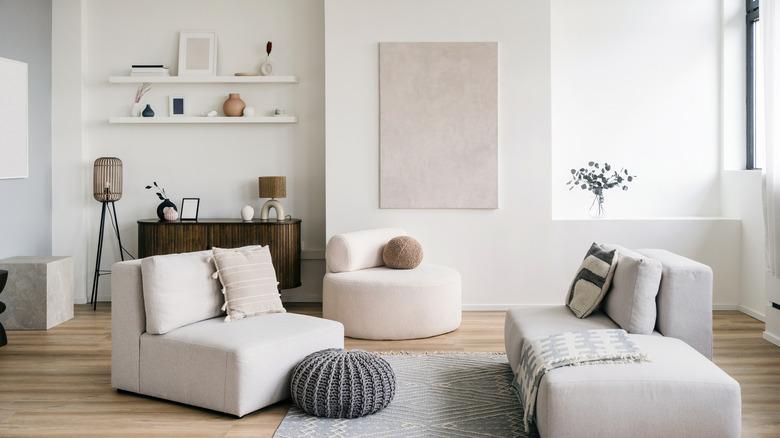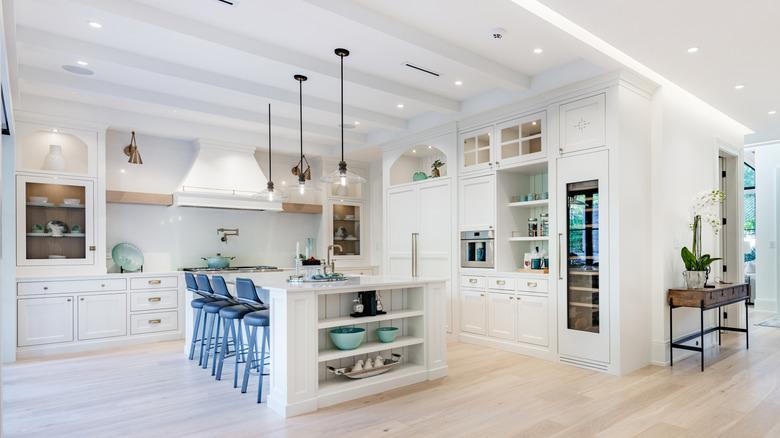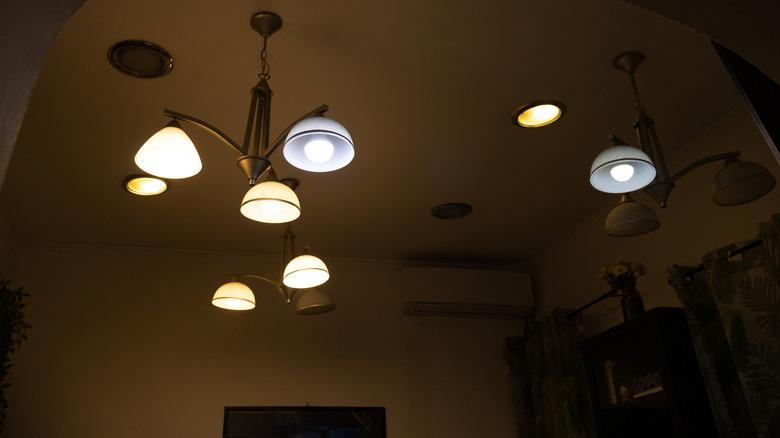3 Home Design Trends That Likely Won't Continue After 2025
With the ever-evolving nature of home design, it doesn't hurt to stay on top of current trends (and try to get ahead of the new ones). If you're not a professional interior designer, though, it can be hard to determine exactly which trends are on their way out and which are on their way in, making it all too easy to have a design faux pas. Since the average Joe may not be able to afford their own personal interior designer to guide their way, we're here to round up a few of the big trends that are taking a nosedive, and which designs to turn to instead (all backed by the experts, of course!).
According to interior designers, some items and trends like fast furniture, the stark modern farmhouse style, and artificial lighting are all quickly exiting stage left. These past trends were all heavy on minimalism, sharp lines, and streamlined efficiency. If you have these features, they may quickly become a telltale sign your home design aesthetic is horribly outdated.
Now, people are more interested in a space that feels lived-in and imbued with unique character throughout. This will translate differently for each design style (modern, farmhouse, etc.), and it doesn't mean you have to give up your old die-hard aesthetic. There are plenty of ways to satisfy both old and new tastes. One thing is reigning true, though: Nature, craftsmanship, and comfort are now taking center stage.
Modern farmhouse is out, industrial rustic is in
This farmhouse style switcheroo is a perfect example of the changing trends. Previously, the modern farmhouse style was all the rage, and included a very neutral palette with lots of white and minimalism. Now, many people are feeling that the modern farmhouse is just too sterile. Instead, they're turning to rustic industrial farmhouse; a new style that's starting to gain some real traction in the design world and combines many beloved design features.
Rustic industrial farmhouse style is an amalgamation of multiple different aesthetics. It combines rustic and urban, naturals and metals, as well as modern and vintage. This style holds onto many of the beloved rural aspects of modern farmhouse but combines them with mixed metals, wide-open floor plans, and darker colors. There are plenty of ways to bring the industrial farmhouse look into your abode, starting with exposed structural elements like beams and bricks, while also celebrating metal fixtures and worn vintage accents.
Say goodbye to fast furniture, and hello to timeless craftsmanship
For years now, people have been shifting into a more environmentally conscious mindset. This shift is driving consumers' decisions in the design world and could be one of the leading factors in the decline of fast furniture. Fast furniture's quick availability and affordability previously made it a smart pick for homeowners seeking to furnish with the latest trend and not feel guilty for redesigning a short time later. With this type of instant gratification starting to fade out, people are now turning to furniture that showcases long-lasting craftsmanship and individuality.
Conscious consumerism has led people to opt for handmade or custom furniture pieces, which are now more widely available online and at lower price points. This extra accessibility means you don't need an expensive exterior designer to guide you to your uniquely crafted furniture. So, toss out those fast furniture pieces and start looking for high-quality, craftsmanship-driven replacements that will bring texture, interest, and a sense of longevity to your home.
Ditch artificial lighting, let mother nature light the way instead
One thing a home can't go without is lighting. Some artificial lighting is necessary, but despite this need, interior designers are identifying artificial and overhead lighting as a trend that's on its way out, with more homeowners seeking out ways to utilize the day's sunlight.
Artificial lights can often be harsh, need to be replaced, and getting the right shade is a nightmare. ( After all, what does daylight, cool, and warm mean in light bulbs?) These downsides are driving more homeowners to prioritize ways of introducing as much natural light as possible into their homes. Natural light never needs replacing and can brighten up whole areas of a home with a glow that, let's face it, artificial lights just can't replicate (and is said to be good for the soul). To get away from artificial sources, homeowners are incorporating designs that include things like large picture windows, skylights, and a plethora of windows.
If this trend sounds right up your alley, just keep in mind some of the advantages and disadvantages of natural lighting. Specifically, lots of sunlight can cause damage to materials like fabric and other interior design items, fading their color. Consider upgrading your windows with a UV-protective film and preventing damage to your furniture by sealing wood pieces, conditioning leather items, and periodically rearranging the room's layout. These preventative measures will protect your interior while still allowing residents and guests to enjoy that gorgeous midafternoon glow.



